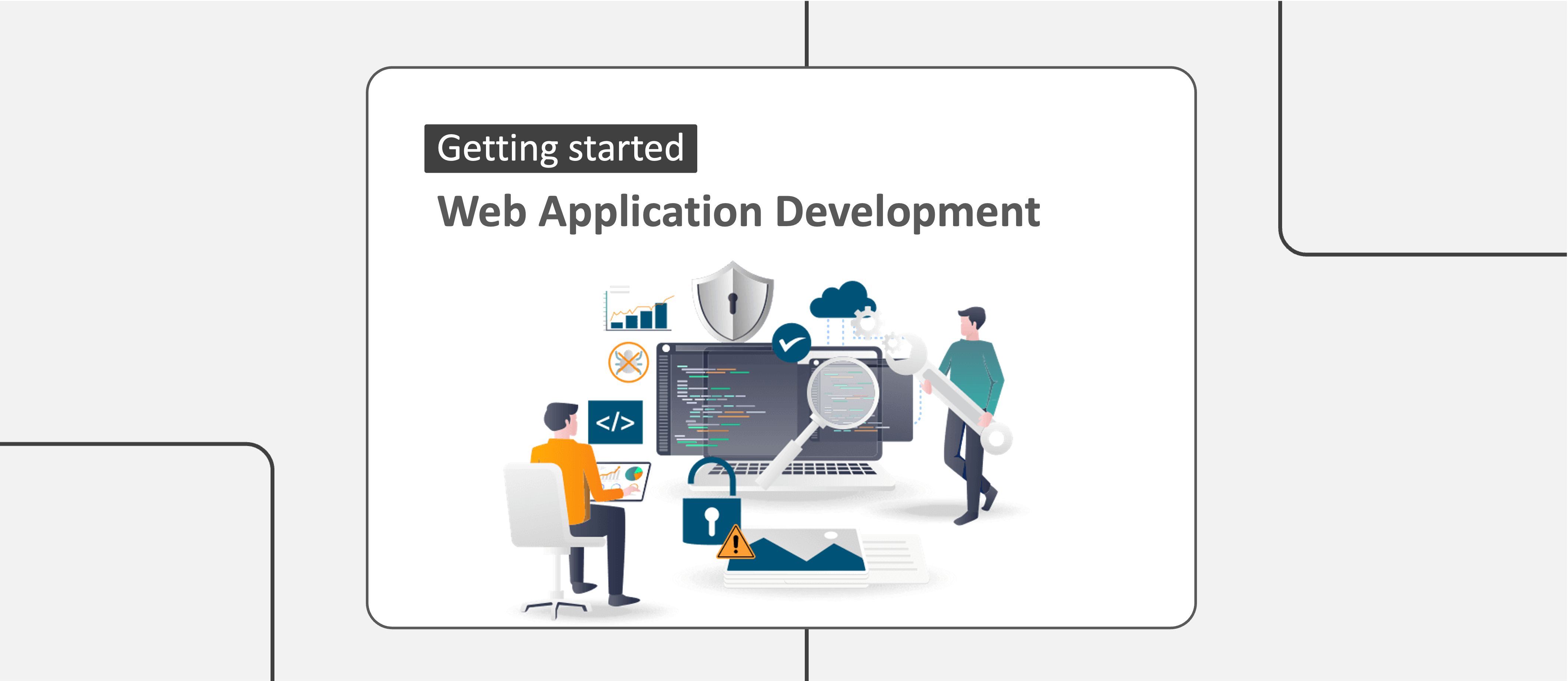What exactly is a Web Application?
Every time you do something online, you are using a web application. It could be online shopping, online banking, or web-mail. Web applications are essentially applications stored on remote servers provided by third parties and can be accessed through your browser without having to download anything.
In 2023, the worldwide Web Application Development market reached a valuation of USD 60,709.6 million. Forecasts indicate a steady growth trajectory, with a projected CAGR of 8.08% till 2028, propelling the market towards a value of USD 96,748.41 million.
How is Web Application Development done?
Web application development is a comprehensive process that involves both client-side and server-side programming to create applications accessible through web browsers. This development journey begins with the ideation phase, where developers identify a specific problem and brainstorm potential solutions. Once a clear idea is formed, they move on to the design stage, crafting the user interface and experience to ensure it meets user needs and expectations. Choosing the right framework is crucial at this stage, as it dictates the architecture and functionality of the application.
After design, web application development continues with the actual coding and development of the web app, utilizing various programming languages and tools. Rigorous testing follows to identify and fix any bugs or issues, ensuring a smooth user experience. Finally, the web application is deployed, making it accessible to users worldwide. Continuous maintenance and updates are essential post-deployment to keep the application running smoothly and to incorporate user feedback for future enhancements. Overall, web application development is an iterative process that focuses on delivering high-quality solutions to users.
How does a web application work?
A web app can be accessed from anywhere with an internet connection. A web browser like Safari, Mozilla Firefox or Google Chrome is used to connect to your app. For a web application to work, three elements are required: a web server to handle requests from clients, an application server to execute the tasks requested, and a database to hold the information.
Web applications are coded in two types of languages. A web application is generally composed of server-side scripts and client-side scripts. The server-side script handles storing and retrieving information and uses languages such as Python and Java. Developers program server-side to create scripts that web applications will use. The client-side script requires languages like JavaScript, CSS and HTML5. The browser is used to run these languages. These languages are browser-supported. The client-side script is responsible for presenting the information to the user.
Web applications have short development cycles and can be developed by small teams. Some web applications require server-side processing. We call these dynamic applications. Static applications don’t require server-side processing.
Here is how a web application works:
- The user creates a request to the web server using the application’s user interface.
- This request is sent to the web application server by the web server.
- The web application server executes the requested task, then generates the results.
- Those results are sent back to the web server (requested information or processed data).
- The web server delivers the requested information to the client (tablet, mobile device, or desktop).
- Upon request, the user is shown the requested information.
Advantages of Web Applications
Platform independence:
In general, web-based applications are far more versatile and cross-platform compatible than traditional installed software. Generally, all you would need is a web browser (Internet Explorer, Firefox, Chrome, Safari to name but a few). It doesn’t matter whether you are using a Mac, Linux, or Windows computer to use the web application.
Easy to manage:
Web application development systems need to be installed only on the server, placing minimal requirements on the end user’s workstation. It is much easier to maintain and update the system, as clients can be updated directly through the server.
Easy to deploy:
Deploying web applications for any platform in any work environment is easier due to the manageability and cross-platform support offered by WebLogic. It is ideal where The system and data are remote and the bandwidth is limited. Typically, you will need to provide the user with a website address and internet access to make them deployable. The system provides access to multiple systems, streamlines processes, and improves relationships by providing access to customers, suppliers, or all third parties.
Data Security
The larger and more complex systems carry more data and have separate systems and data sources. These systems and processes can typically be combined in a web-based system, reducing the need for separate systems. Web-based applications provide added security by removing access to the back end servers and data.
Lower Costs
The use of Web-based applications can significantly reduce costs due to reduced support and maintenance, as well as a simplified architecture. Your web-based application can often help streamline your business operations further and enable you to make further savings.
Conclusion
In conclusion, web applications play a crucial role in our daily online interactions, offering a wide range of functionalities from online shopping to banking. With the continuous growth of the web application development market, it is clear that businesses must leverage these powerful tools to enhance their operations and meet customer needs effectively.
At Zelite Solutions, we specialize in web portal development services tailored to your business requirements. Our expertise ensures that your web applications are robust, secure, and user-friendly, empowering your organization to thrive in the digital landscape. Explore our services and see how we can help you achieve your web application development goals.




